It’s funny how times change. Diesel was once the fuel of the future, but now it’s a dirty word, and electrification of powertrains already optimised for efficiency is the way forward. This trend is so strong that expensive, advanced EV technology has trickled down to the supermini sector, with small, cheap cars boasting hybrid systems primarily for improved efficiency, as well as more power and refinement to back up this most important trait.
Two new models promise these qualities, and the newest is the fourth-generation Toyota Yaris. It combines a small petrol engine with a battery and electric motor set-up in a compact body – and with more and more superminis turning towards electrification, it looks like Toyota’s perseverance with this technology could really pay dividends.
- SEE MORE Best superminis 2020
However, there is another hybrid supermini that promises to deliver just as much in the way of practicality and efficiency, combined with plenty of infotainment and connectivity technology – an area in big demand from buyers. While the Honda Jazz might be at the pricier end of the class, these superminis will have to deliver on all fronts – but which is the best small hybrid?
Toyota Yaris
| Toyota Yaris | |
| Price: | £20,970 |
| Engine: | 1.5-litre 3cyl, 90bhp |
| 0-62mph: | 9.7 seconds |
| Test economy: | 46.5mpg/10.2mpl |
| CO2: | 140g/km |
| Annual road tax: | £140 |
This Yaris Mk4 is the culmination of Toyota’s latest hybrid technology condensed in a compact package. So what’s it like? We’re testing the £20,970 Design model to find out.
Design & engineering
From the ground up, this Yaris is all new. It’s the first time we’ve seen the GA-B platform, a scaled-down version of the Toyota New Global Architecture chassis tech that underpins the Corolla. While the suspension layout is conventional for the supermini class, with MacPherson struts at the front and a torsion beam at the rear, the platform is teamed with a new, ‘fourth-generation’ hybrid system. This combines a 90bhp 1.5-litre three-cylinder petrol engine with a relatively small 0.76kWh lithium-ion battery and a pair of electric motors for a combined output of 114bhp.
Only one of those motors drives the wheels, though. The other is used to start the petrol engine as well as charge both the lithium-ion and the car’s regular 12V batteries. Toyota thinks this is the most efficient method. On the subject of battery size, remember that this is what Toyota calls a ‘self-charging’ hybrid; it’s not a plug-in, so the only means of topping up is the system itself, which is charged on the move or by the motor recouping energy as the car slows down. It’s a small battery, so it charges quickly.
The system is managed by a continuously variable transmission – an automatic with no gears that will keep the engine revs at the right point for either maximum performance or maximum efficiency, blending these qualities depending on driver input. There have been a lot of refinements to the motor, too, as part of Toyota’s hybrid transaxle, which is now lighter and more compact than any system before it. The biggest performance improvement is that the Yaris can now run in EV mode at up to 80mph.
A more sophisticated Power Control Unit is key to maximising the potential of the battery and therefore the motors, while a power-split device allows the Yaris to run as a parallel hybrid (electric motor separate from the petrol engine) or with the two power sources combined.
It’s a shame more of this development effort and money didn’t go into the car’s interior, though. While the mechanical improvements are impressive (and tangible, as we’ll see), the cabin materials still feel budget and tough. The design is an improvement, with two round pods in the instrument display, but while the ergonomics are sound, the look is bland.
Driving
Despite the complex engineering, the Yaris is very easy to drive, as any good supermini should be. The software and hardware combine well, and the car is smooth.
The petrol engine is refined enough unless you really push it hard. At that point it starts to grumble, and a constant three-cylinder growl due to the CVT holding revs is audible. However, the electric motor’s assistance means this is rarely the case. There’s no need to abuse the powertrain as with some small cars, because the torque boost here helps progress.
While the Yaris doesn’t exactly feel quick, with a 0-62mph time of 9.7 seconds, performance is smart enough. Its easily exploitable nature is what really appeals. The integration of the hybrid system feels more direct, so drive is transmitted more quickly after pushing the throttle; the more responsive powertrain delivers its torque smoothly, switching between electric-only and joint running with the noise of the petrol engine kicking in being the sole clue to the switch. Although the CVT means this model doesn’t feel especially sporty on the move, the Yaris is a good town car and feels just a little bit more responsive than the Honda.
However, the ride does feel a bit firm sometimes, and the suspension set-up is a little at odds with the powertrain’s relaxed feel. Harsh inputs on country roads can cause the Yaris to skip, but at any other time it feels relatively planted. And while there is a firm edge to the way the dampers deal with bumps, it’s composed, the steering is direct, and the Toyota feels more agile and engaging than the Jazz.
Practicality
It’s not as practical as its rival, though. The cars’ dimensions show that the Yaris has a much smaller footprint, which means the Toyota’s 286-litre boot is surprisingly good, losing out to the Jazz’s by only 18 litres.
However, rear-seat access, leg and headroom are noticeably more limited in the Toyota. Both models have to package their batteries, which in the Yaris means the car feels a little more cramped than some rivals. The Jazz is focused on practicality and space, so the restrictions are not as noticeable. Otherwise, the Toyota’s driving position is good and visibility fine, although not quite as good as in the Honda.
Ownership
Both these Japanese brands are famed for their reliability, which is highlighted by Toyota’s five-year/100,000-mile warranty. The company is confident of its products – and so it should be, because it finished sixth overall in our Driver Power owner-satisfaction survey.
Toyota was rated the third best for reliability and build quality, as well as economy and costs. Safety is strong, too, because the Yaris features the Safety Sense package, which includes adaptive cruise, lane-trace assist, and collision warning, all of which helped the car to a full five-star rating in Euro NCAP tests.
Running costs
Even at the lower business rate, the Yaris will be the cheaper of these cars to run by the tune of £101, at £783 a year. This is because it puts out a claimed 92g/km of CO2 emissions, placing it in the 21 per cent Benefit in Kind tax bracket. The 104g/km Jazz sits at 23 per cent. The Toyota was slightly more efficient on test, too, at 46.5mpg – £1,347 a year in fuel at today’s prices.
Testers’ notes
“The Yaris’s more compact dimensions mean it feels just that bit easier to thread through traffic and tighter spots in towns and cities.”
Honda Jazz
| Honda Jazz | |
| Price: | £21,385 |
| Engine: | 1.5-litre 4cyl, 96bhp |
| 0-62mph: | 9.5 seconds |
| Test economy: | 42.3mpg/9.3mpl |
| C02: | 155g/km |
| Annual road tax: | £140 |
Honda’s Jazz is the Yaris’s big rival, sporting similar technology and targeting a similar market. In EX trim it’s slightly more expensive, at £21,385, but is it worth the extra?
Design & engineering
The Jazz is only £415 dearer, which isn’t a huge amount – especially when you realise the Honda gets a few more features, including heated half-leather seats and parking sensors in EX trim. It’s not surprising that both cars are similarly priced, though, given that they both use sophisticated hybrid powertrains.
The Honda features a 1.5-litre four-cylinder petrol engine and two electric motors, matching the Yaris – and as in the Toyota, only one motor drives the wheels directly. This is called the propulsion motor. The second motor is driven by the petrol engine (which is also directly connected to the wheels) and generates electricity to charge the battery.
It’s no coincidence that both brands have utilised this technology, because the advances in hybrid powertrains now mean this is the most efficient method. The power sources combined produce a total of 108bhp, which is slightly down on the Yaris – but the Honda is also 143kg heavier.
The basic suspension design is the same as the Toyota’s, too, but at the rear of the Jazz the torsion beam set-up is important to the packaging, because the Honda boasts a clever practicality feature. The bigger footprint compared with the Yaris’s allows the Jazz to offer clever and cinema-style Magic Seats.
There’s a new infotainment system as well, whose tech is similar to that which made its debut in the Honda e electric supermini. The Jazz is a pragmatic car, though, and the way the set-up is integrated into the cabin lacks flair. In fact, as with the exterior design, there’s very little in the way of exciting or attractive design. The materials are as solid as the Yaris’s, and while quality is a little higher in places, such as the soft dash-top, otherwise it’s very similar.
Driving
The Honda’s naturally aspirated 1.5-litre four-cylinder engine is louder than the Toyota’s three-cylinder, and the noise isn’t as characterful, either. The issues with the CVT transmission apply here, too – only the drone from the engine is worse under full throttle. At least the Honda’s acceleration is good; the Jazz is 0.2 seconds quicker than the Yaris from 0-62mph.
Both brands have clearly done plenty of work on improving the integration of the power sources and how the CVT combines these, because such gearboxes’ old-school ‘rubber band’ feeling has mostly been eradicated. Each car offers a better, more responsive connection with the driver through the accelerator and powertrain than hybrids such as this used to.
The Jazz is far from dynamic, though, and it’s not in the same league as the Toyota for handling. This is partly due to the extra weight it’s carrying, as well as the taller roofline. The latter at least brings benefits for practicality, as we’ll see later.
Cornering is stable enough, but whereas the Toyota doesn’t mind being pushed a little harder thanks to its chassis set-up, the Honda feels out of its depth earlier, so it’s less enjoyable.
There is a little more comfort, thanks to its softer and slightly more absorbent suspension, though. The Jazz still shuffles around over broken surfaces, as does the Yaris, but its wheel movements feel less abrupt. However, the Jazz offer less of an advantage when it comes to comfort than the Yaris does on handling, so the Toyota is the (slightly) better-balanced car.
Practicality
You sit up higher in the Jazz, and combined with the split A-pillars, forward visibility is great. In fact, the taller roofline and larger glass area (albeit at the expense of some style) mean the Honda’s rear visibility is better than the Toyota’s, too, so parking should be easier. The Jazz also gets parking sensors and a rear camera as standard, whereas the Yaris just has the latter.
It’s no surprise that the bigger footprint means, the Jazz is also more spacious inside. Rear access is easier, and there’s a bit more legroom and a lot more headroom. The boot is slightly bigger, at 304 litres with the seats up; fold them down and there’s 1,205 litres.
Ownership
As with Toyota’s, the Honda brand’s reputation is strong, and it backed this up with a seventh-place finish in our most recent Driver Power survey. Owners liked the practicality and boot space on offer from Honda’s cars, something this Jazz reinforces. They also rated the company’s cars highly for reliability, build quality, economy, running costs and safety features.
On this subject, the Jazz benefits from autonomous braking, blind-spot monitoring, cross-traffic alert, lane-departure warning and lane-keep assist. Unlike the Yaris, it hasn’t yet been tested by Euro NCAP.
Running costs
Superminis have to be efficient – and hybrid superminis doubly so. Thankfully, the electrified powertrains in both cars here delivered decent economy on our test run, with the Jazz returning 42.2mpg for an annual fuel bill (over 12,000 miles) of £1,484. However, the Yaris exceeded even that, with 46.5mpg for a yearly fuel spend of £1,347.
Many buyers in this sector choose to pay by finance, where the Yaris is the stronger bet; and if you’re a cash buyer then the Toyota will hold on to more money, too. Our experts predict a residual value of 47.1 per cent, which equates to £11,095 in depreciation. The Honda is expected to hold on to 45.5 per cent of its value after the same period (three years/36,000 miles) which works out at £11,659 in depreciation.
Testers’ notes
“The Crosstar mentioned is Honda’s attempt at a more lifestyle-focused vehicle. But it’s pricier; the regular Jazz is the one to go for.”
First place: Toyota Yaris
Both cars prove how far small hybrids have come, but the Yaris just edges it thanks to its affordability on finance – the way most supermini owners buy. It handles better than the Jazz and comfort is good enough, while new connectivity tech and funky design mean it delivers what a supermini needs to. Its economy and running costs beat the Honda’s, too – key in a hybrid – even if it loses on practicality.
Second place: Honda Jazz
If you’re looking for a practical supermini then the Jazz is for you. Its Magic Seats offer huge flexibility and something unique, but while the Jazz is fast enough, it’s not as refined as the Yaris. It is pricier on finance and not as economical, either – two key factors for any supermini. The tech is good and EX trim gets a great kit level, but the Yaris Design offers adequate equipment, so the Jazz just loses out.
Also consider...
Ford Fiesta
- New: Ford Fiesta 1.0 Hybrid Titanium
- Price: £19,860
- Engine: 1.0-litre 3cyl, 123bhp
For similar money to the Yaris, you could buy one of the best superminis on sale. However, despite an update and the name, the Fiesta is only a mild hybrid, so there’s no electric-only running. The set-up should still help improve efficiency, though.
Toyota Corolla
- Used: Toyota Corolla 1.8 Hybrid Icon
- Price: £19,998
- Engine: 1.8-litre 4cyl, 120bhp
If you’re after a hybrid, but need a little more space than in a supermini, consider the Yaris’s bigger brother, the Corolla, for this budget. You can pick from well specced, 5,000-mile Icon models, and the 1.8 won’t demand a penalty in practicality like the 2.0.
Figures
| Toyota Yaris 1.5 VVT-I Hybrid Design | Honda Jazz i-MMD EX | |
| On the road price/total as tested | £20,970/£21,555 | £21,385/£22,035 |
| Residual value (after 3yrs/36,000) | £9,875/47.1% | £9,726/45.5% |
| Depreciation | £11,095 | £11,659 |
| Annual tax liability std/higher rate | £873/£1,746 | £975/£1,949 |
| Annual fuel cost (12k/20k miles) | £1,347/£2,245 | £1,484/£2,473 |
| Ins. group/quote/VED | 14/£457/£140 | 20/£400/£140 |
| Cost of 1st/2nd/3rd service | £165/£295/£165 | £649 (5yrs) |
| Length/wheelbase | 3,940/2,560mm | 4,044/2,517mm |
| Height/width | 1,500/1,745mm | 1,526/1,694mm |
| Engine | 3cyl in-line/1,490cc | 4cyl in-line/1,498cc |
| Peak power/revs | 90/5,500 bhp/rpm | 96/5,500 bhp/rpm |
| Peak torque/revs | 120/3,600 Nm/rpm | 131/4,500 Nm/rpm |
| Peak combined power/revs | 114/5,500 bhp/rpm | 108/5,500 bhp/rpm |
| Transmission | CVT automatic/fwd | CVT automatic/fwd |
| Fuel tank capacity/spare wheel | 36 litres/repair kit | 40 litres/repair kit |
| Boot capacity (seats up/down) | 286/N/A litres | 304/1,205 litres |
| Kerbweight/payload/towing weight | 1,085/530/450kg | 1,228/482/N/A |
| Turning circle | 11.0 metres | 10.1 metres |
| Basic warranty/recovery | 5yrs (100,000)/N/A | 3yrs (unlim)/3yrs |
| Driver Power manufacturer/dealer position | 6th/2nd | 7th/4th |
| Euro NCAP: Adult/child/ped./assist/stars | 86/81/78/85/5 (2020) | N/A |
| 0-62mph/top speed | 9.7 secs/109mph | 9.5 secs/108mph |
| Auto Express economy/range | 46.5/368 miles | 42.2/371 miles |
| WLTP combined | 65.7-68.9mpg | 61.4mpg |
| WLTP combined | 14.5-15.2mpl | 13.5mpl |
| Actual/claimed CO2/tax bracket | 140/92g/km/21% | 155/104g/km/23% |
| Airbags/Isofix/parking sensors/camera | Seven/yes/no/yes | 10/yes/yes/yes |
| Auto box/lane-keep/blindspot/AEB | Yes/yes/yes/yes | Yes/yes/yes/yes |
| Climate control/cruise/leather/heated seats | Yes/adaptive/no/no | Air-con/adapt/half/y |
| Met paint/LEDs/keyless entry & go/power tailgate | £585/yes/no/no | £650/yes/yes/no |
| Sat-nav/digital dash/DAB/connected services | No/no/yes/yes | Yes/no/yes/yes |
| Wireless charging/Apple CarPlay/Android Auto | No/yes/yes | No/wireless/yes |
from Sitewide RSS feed https://ift.tt/3cBKx49
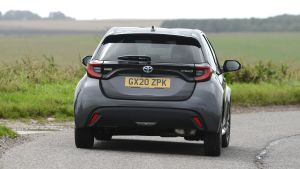
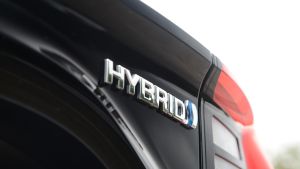
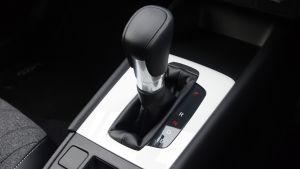
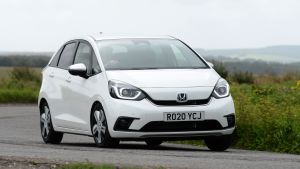
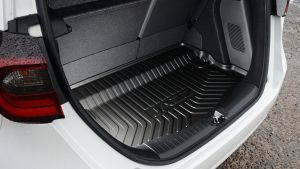
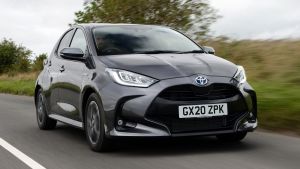
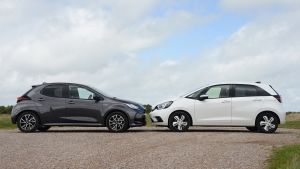
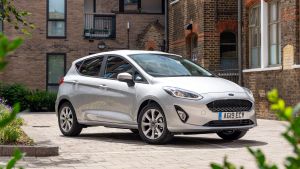
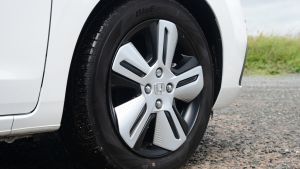


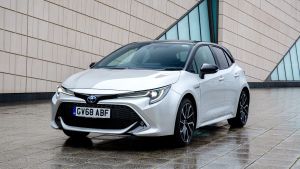
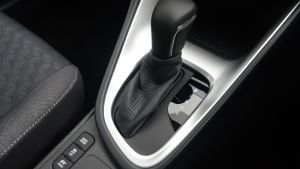
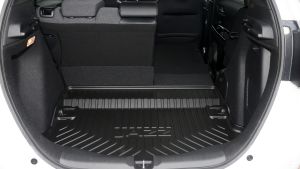
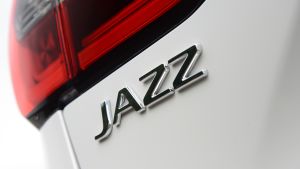
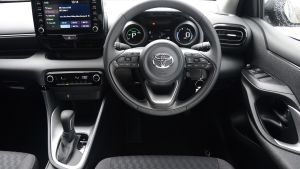
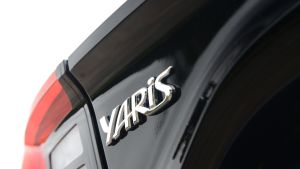
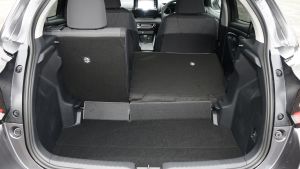


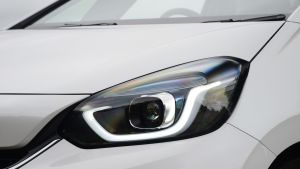
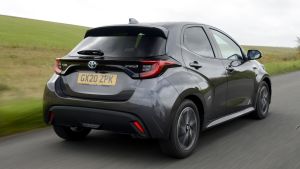
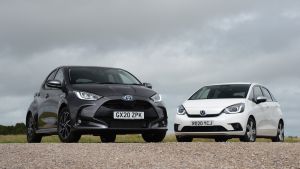
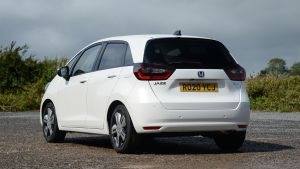
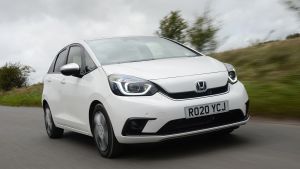

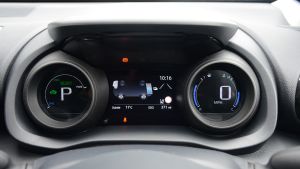

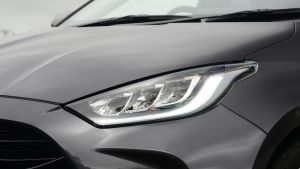
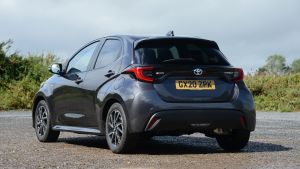
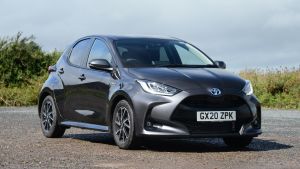
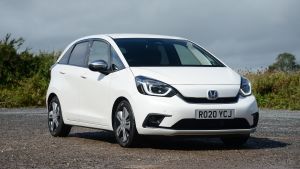
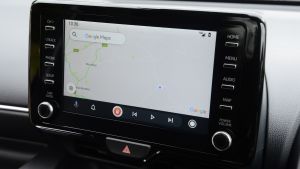
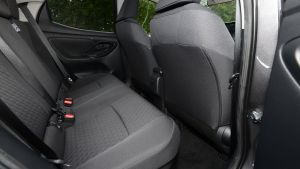
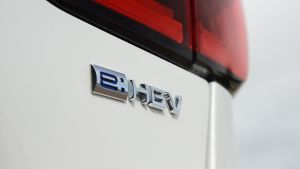
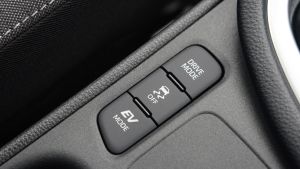
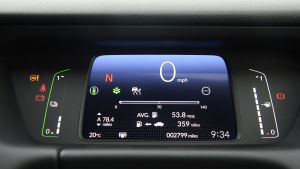
No comments:
Post a Comment